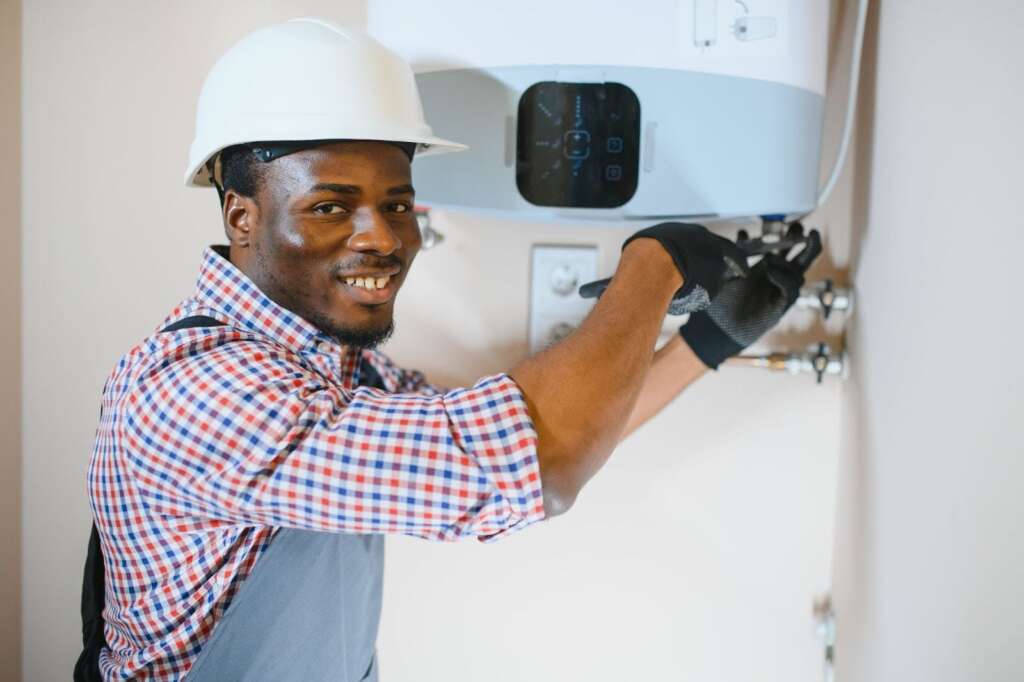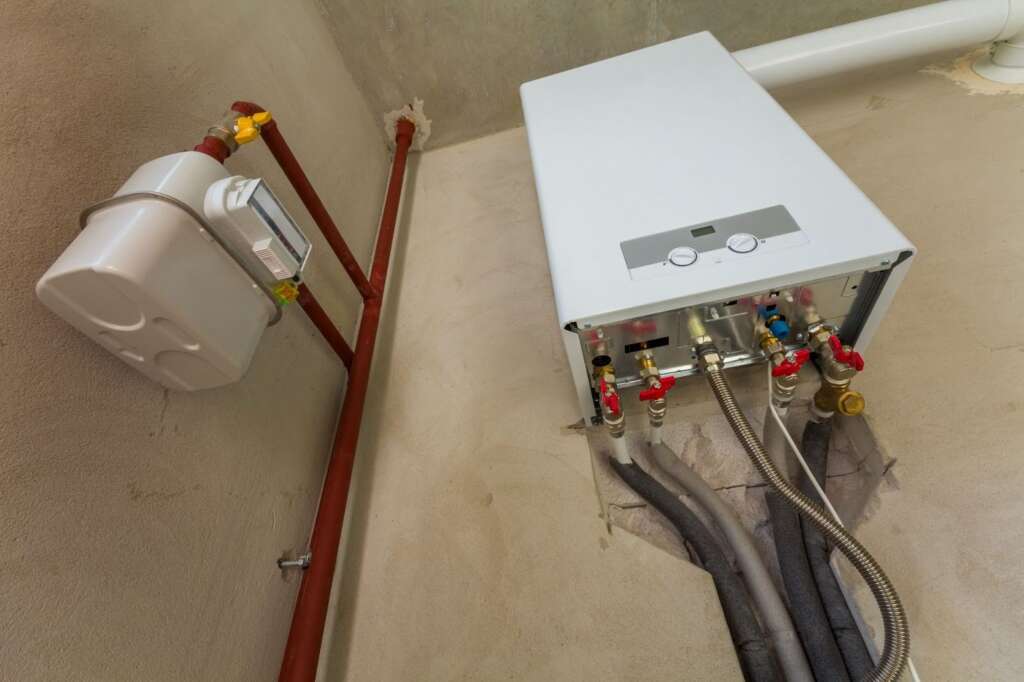Unlike traditional water heaters with storage tanks, a tankless system heats water instantly as it flows through the unit. These compact systems save space, reduce energy waste, and deliver reliable performance — this is why their popularity continues to grow. Installing a tankless hot water heater requires precision to ensure proper functionality and safety. Some homeowners have learned the appropriate installation process.
Choosing the Right Tankless Hot Water Heater for Your Home
Proper and safe installation begins with selecting the right tankless hot water heater. A carefully chosen system ensures compatibility with your household’s water usage and energy requirements. This step simplifies installation and sets the foundation for reliable and efficient performance.
Assess Your Household’s Hot Water Demand
Determine the number of appliances and fixtures that will simultaneously use hot water. Calculating your household’s water flow rate in gallons per minute ensures you choose a system that meets your needs. This step prevents interruptions in the hot water supply during peak usage.
Decide on the Energy Source
Evaluate whether your home has a gas or electric energy source. Gas-powered models are ideal for higher water demands, while electric systems work well for smaller households or specific zones. Selecting the appropriate energy source ensures efficient operation and reduces installation adjustments.
Check for Compatibility With Your Existing System
Review your home’s plumbing and ventilation setup to ensure it aligns with the tankless system’s requirements. Homes with outdated infrastructure may need upgrades to support the unit. Ensuring compatibility avoids delays during installation and ensures the system functions properly.
Consider Energy Efficiency Ratings
Look for models with higher energy efficiency ratings to save on utility bills over time. Systems with certifications guarantee optimal performance while reducing energy consumption. Choosing an efficient unit aligns with both environmental and budget-conscious goals.
Evaluate Size and Placement Options
Consider the size of the tankless system and where it will be installed in your home. Compact units can be mounted on walls, saving valuable space, but ensuring the selected location has proper clearance and access is essential. Careful planning for size and placement streamlines the installation process.
Preparing Home Before Installing Tankless Hot Water Heater
Proper preparation ensures a smooth installation process for a tankless hot water heater. Addressing plumbing, electrical requirements, and ventilation needs allows for an efficient and hassle-free setup. Taking these steps beforehand helps create a safe and reliable environment for your new system.

Assess Your Current Water System
Inspect the existing plumbing to confirm it can handle a tankless water heater’s flow rate and pressure. Older systems may require upgrades like larger pipes to accommodate the unit’s performance needs. Ensuring the system is up to date reduces potential complications during installation.
Check for Proper Ventilation
If installing a gas-powered unit, identify a location in your home that can support ventilation. The venting system must direct exhaust gases safely outdoors while adhering to local building codes. This step ensures the area remains safe for operation and minimizes risks from improper exhaust handling.
Evaluate Electrical or Gas Connections
Confirm that your home’s electrical panel or gas line can meet the unit’s energy requirements. An electrician or plumber can upgrade the system if additional wiring, breakers, or gas capacity is needed. Ensuring compatibility with your power or fuel source avoids delays or unsafe connections during installation.
Plan the Installation Location
Select a location that allows easy maintenance access and meets clearance guidelines provided by the manufacturer. Wall-mounted units require a sturdy surface capable of supporting the heater’s weight. Choosing the right location simplifies installation and keeps the unit functioning efficiently.
Gather the Necessary Tools and Materials
Prepare tools such as pipe wrenches, mounting hardware, and sealants to complete the installation process. Materials like plumbing fittings, vent pipes, and electrical supplies should match the specifications of the tankless system. Having everything ready ensures the installation can proceed smoothly without interruptions.
How to Install a Tankless Hot Water Heater
Installing a tankless hot water heater requires careful preparation and attention to detail. A proper setup ensures the system operates efficiently, safely, and reliably. Each step in the process, from preparation to testing, contributes to the long-term performance of the unit. Following a systematic approach ensures the installation process is smooth and effective.
Prepare the Installation Area
Select a location that meets the manufacturer’s specifications, including clearances and accessibility. Ensure the wall can support the unit’s weight if it is mounted. Turn off the water supply and power source, whether gas or electric, to prevent accidents. Clear the workspace of any obstructions to make the process easier. Verify that the chosen area has proper ventilation for gas models or access to electrical outlets for electric units.
Mount the Tankless Hot Water Heater
Attach the mounting bracket securely to the wall using the hardware provided by the manufacturer. Use a level to ensure the bracket is straight to avoid misalignment during installation. Carefully place the unit on the bracket, following the specific guidelines outlined in the manual. Double-check the stability of the heater after mounting to ensure it is securely attached. Proper alignment at this stage is essential to avoid stress on connections.
Connect the Plumbing System
Install shutoff valves for the cold water inlet and hot water outlet for easy maintenance. Use the appropriate pipe materials, such as copper or PVC, and ensure all connections are sealed to prevent leaks. Flush the system to remove debris before connecting the pipes to the unit. Attach the pipes to the heater and secure them tightly to avoid water pressure issues. Inspect each connection to ensure there are no leaks after completing this step.
Set Up the Ventilation System
For gas-powered units, install the vent pipes according to the manufacturer’s instructions to expel exhaust gases. Use materials such as stainless steel or PVC specifically designed for venting. Ensure the vent pipes have proper clearance to avoid overheating nearby materials. Seal all vent connections securely to prevent exhaust gas leaks. Position the vent termination point according to local building codes for safety.
Connect the Electrical or Gas Supply
For electric models, ensure the wiring matches the voltage and amperage requirements specified by the manufacturer. Use a dedicated circuit to avoid overloading your home’s electrical system. For gas units, connect the gas line using flexible piping and a shutoff valve for easy access. Test the gas connection for leaks using soapy water before powering the unit. Double-check all connections to ensure they meet safety standards and local codes.
Test and Adjust the System
Turn on the water supply and let it run through the system to check for leaks. Power on the unit and adjust the temperature settings to the desired level. Run hot water through multiple fixtures to ensure the system functions as expected. Monitor the system for any unusual noises or issues during operation. Make final adjustments based on the manufacturer’s guidelines to optimize performance.

Precautions When Installing a Tankless Hot Water Heater
Installing a tankless hot water heater is a significant upgrade for any home, but proper precautions are essential to ensure safety and efficiency. Knowing the key considerations helps prevent potential issues like leaks, improper connections, or system malfunctions. It also ensures the unit operates at peak performance and delivers long-term reliability. By paying attention to these precautions, homeowners can avoid costly repairs and enjoy the full benefits of their investment.
Choosing the Right Size
Selecting the correct size for your tankless water heater is crucial for meeting your household’s hot water needs. An undersized unit may struggle to provide sufficient hot water during peak usage, while an oversized system can lead to energy inefficiency. Evaluating your home’s flow rate and temperature rise requirements ensures the system can handle demand. Consulting with a professional can help identify the best model for your needs.
Ensuring Proper Ventilation
Tankless water heaters generate exhaust gases that must be safely vented outside the home. Improper ventilation can lead to the buildup of harmful gases like carbon monoxide, creating a serious health hazard. Installing appropriate venting materials and following manufacturer guidelines prevents these risks. Regular maintenance of the venting system also helps maintain safe and efficient operation.
Installing Adequate Gas or Electrical Supply
A tankless water heater requires a sufficient gas or electrical supply to operate effectively. Inadequate supply can result in poor performance, frequent shutdowns, or even damage to the system. Ensuring that gas lines, breakers, or wiring meet the manufacturer’s specifications is vital for safe and reliable operation. Professional installation can confirm the system’s energy requirements and reduce the risk of costly errors.
Preventing Water Pressure Issues
Proper water pressure is critical for the smooth operation of a tankless hot water heater. Excessively high pressure can strain the system, while low pressure may lead to inadequate hot water delivery. Installing a pressure regulator and checking the home’s water pressure helps avoid these problems. Routine monitoring ensures that the system remains in good working order over time.
Protecting Against Hard Water Damage
Hard water can lead to mineral buildup inside the tankless water heater, reducing efficiency and lifespan. Installing a water softener or descaling system helps prevent limescale accumulation in areas with hard water. Regular descaling, as the manufacturer recommends, keeps the unit functioning properly. These steps help maintain efficiency and avoid costly repairs.
Following Manufacturer Guidelines
Each tankless water heater model comes with specific installation and maintenance requirements outlined by the manufacturer. Ignoring these instructions can void warranties and lead to improper installation. Following the guidelines ensures the system operates as intended and meets safety standards. This attention to detail enhances performance and extends the unit’s longevity.
Ensuring a Smooth Experience With Your Tankless Hot Water Heater
A properly installed and well-maintained tankless hot water heater provides reliable and energy-efficient performance. Preparing your home for installation, choosing the right system, and following maintenance steps are essential for keeping your unit in excellent condition. Paying attention to details during installation, such as securing connections and ensuring ventilation, minimizes risks and enhances system longevity. By staying proactive, you can enjoy uninterrupted hot water and the benefits of a system designed for efficiency and reliability.
Visit our Castaneda’s Plumbing and Rooter blog for expert tips and reliable solutions for all your plumbing needs.


4 Comments
1win apk review
Searchable sections enhance this concise 1win apk review.
📢 📥 Balance Alert: 1.1 BTC credited. Finalize transfer > https://graph.org/ACCESS-CRYPTO-REWARDS-07-23?hs=41efd46f75d7c1741c240811274eca66& 📢
hs956t
https://asesmen.mtssaljawami.sch.id/
Boring nice wonderful superb brilliant crazy strange bad.
1win apk
Experience seamless gaming with the official 1win apk download. Play, bet, and win anywhere on your Android phone.